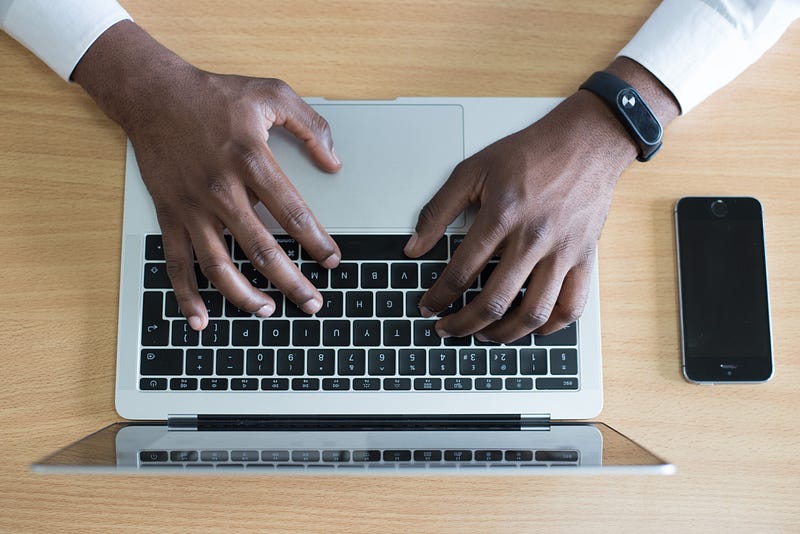# Email Signatures: A Tool for Setting Boundaries and Encouraging Balance
Written on
Chapter 1: The Importance of Email Disclaimers
In today's fast-paced world, it's essential to establish boundaries in our work communications. One professor's assertive out-of-office reply read: “I do not respond to emails on weekends. If this is an emergency, please call my mobile. If you do not have my mobile number, then you do not have a weekend emergency.” This bold statement ignited a vibrant conversation online about the significance of defining office hours and email etiquette.
Stephana Cherak, a graduate student at the University of Calgary, inspired the discussion with a tweet that later led to an article in the journal Nature, highlighting the necessity of using auto-responses or disclaimers in emails to clarify availability and promote healthier time management practices. Writer Anne Helen Petersen shared a similar sentiment on Twitter, emphasizing that a well-crafted email signature can remind recipients that their working hours may differ from those of the sender.
This exchange showcases the value of informing email recipients about your specific working hours, allowing them to understand that they are not obligated to respond immediately.
Section 1.1: The Reality of Work-Life Balance
The necessity of an email disclaimer becomes evident when considering that many Americans work longer hours than their international counterparts. Research from 2017 indicates that academics, in particular, average about 57 hours of work each week. By including a disclaimer about your email hours, you provide reassurance to recipients that a delayed response isn't personal, which can alleviate anxiety about immediate replies. This practice also reinforces your boundaries, ensuring that you only address non-urgent matters during designated times, thereby reducing stress and preventing work from intruding on your personal life.

Chapter 2: The Dangers of Constant Connectivity
The phenomenon of "constant connectivity" poses serious risks to our health and well-being. A 2020 study highlighted how devices like laptops, tablets, and smartphones make it increasingly challenging for employees to disconnect from work. The study revealed that those who cannot disengage suffer higher levels of psychological stress.
Many individuals find themselves checking emails first thing in the morning, taking work calls during personal time, or even using their devices during meals. This constant connectivity can lead to a decrease in overall health and create an unspoken expectation that colleagues must respond to emails at all hours.
The first video titled "Sending out loops the RIGHT way with email signature/music producers" explores how to effectively use email signatures to convey boundaries and expectations. It emphasizes the importance of clear communication in our digital age.
Section 2.1: The Role of Email Disclaimers
An email disclaimer can significantly help establish norms around communication within teams. For instance, Nick Bowman, PhD, a professor at Texas Tech University, includes a disclaimer in his emails stating, “Please note that my working hours might vary substantially from yours. Thus, please do not feel any pressure or obligation to respond to messages on my schedule.” He believes this practice encourages accountability while signaling to colleagues that immediate responses are unnecessary.
David Perlmutter, PhD, the dean of media and communication at Texas Tech, acknowledges that he often works at unconventional hours. His disclaimer aims to clarify that emails sent late at night are not urgent unless explicitly stated. This boundary-setting can help alleviate any pressure felt by staff when receiving emails from their superiors.
The second video, "An Email Signature To Set Boundaries & Promote Healthy Communication," discusses the benefits of incorporating disclaimers in email signatures to foster a more respectful and understanding work environment.
Section 2.2: The Psychological Impact of Email Timing
It's crucial to recognize that the timing of an email can influence the recipient's emotional response, even with a disclaimer included. Julie Olson-Buchanan, the interim dean at the Craig School of Business, warns that sending emails with sensitive subjects after hours can still provoke anxiety, regardless of any disclaimers. Therefore, being mindful of when you send emails is essential for maintaining a positive workplace culture.
While disclaimers may not completely eliminate the challenges posed by constant connectivity, they can help cultivate a respectful atmosphere that encourages individuals to honor their own boundaries.
In conclusion, adopting email disclaimers can facilitate a culture of mutual respect regarding work-life balance, allowing individuals to feel empowered to maintain their boundaries in an increasingly connected world.